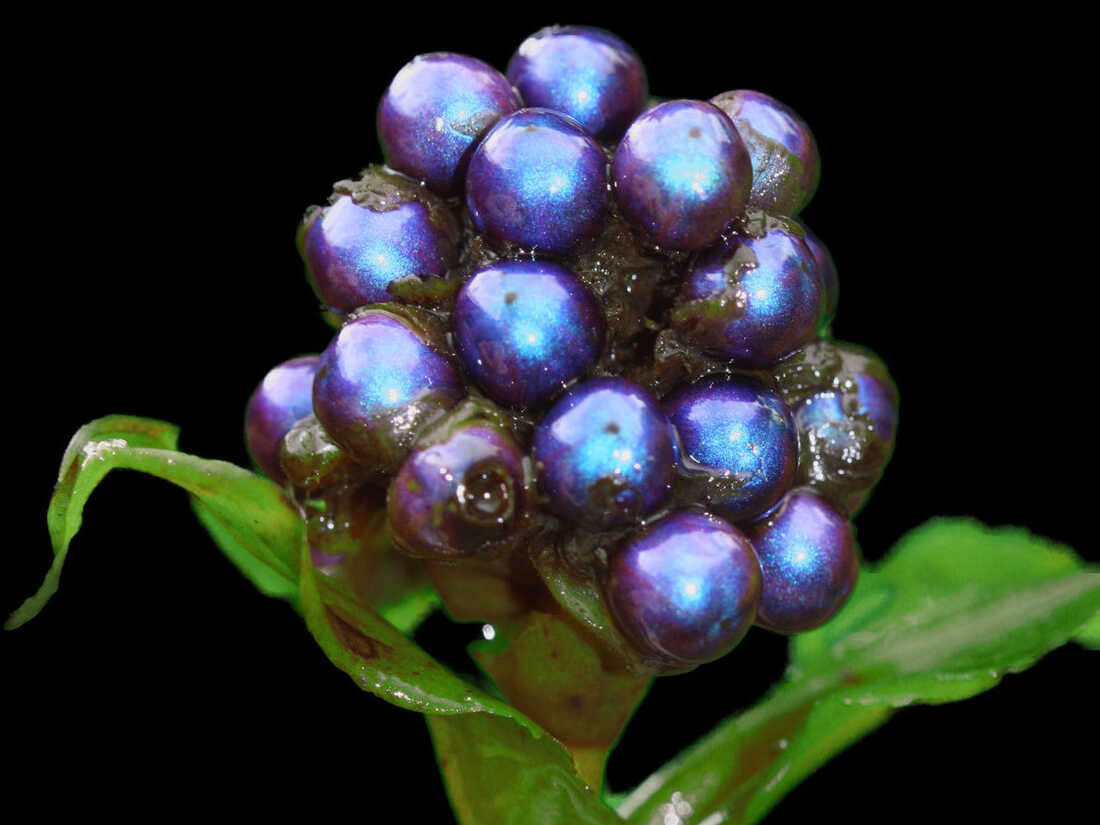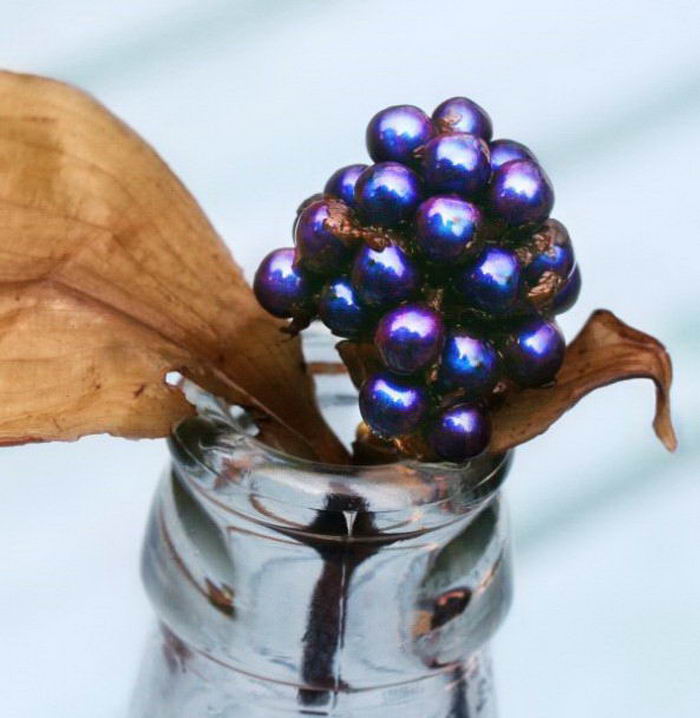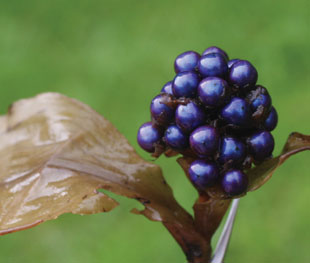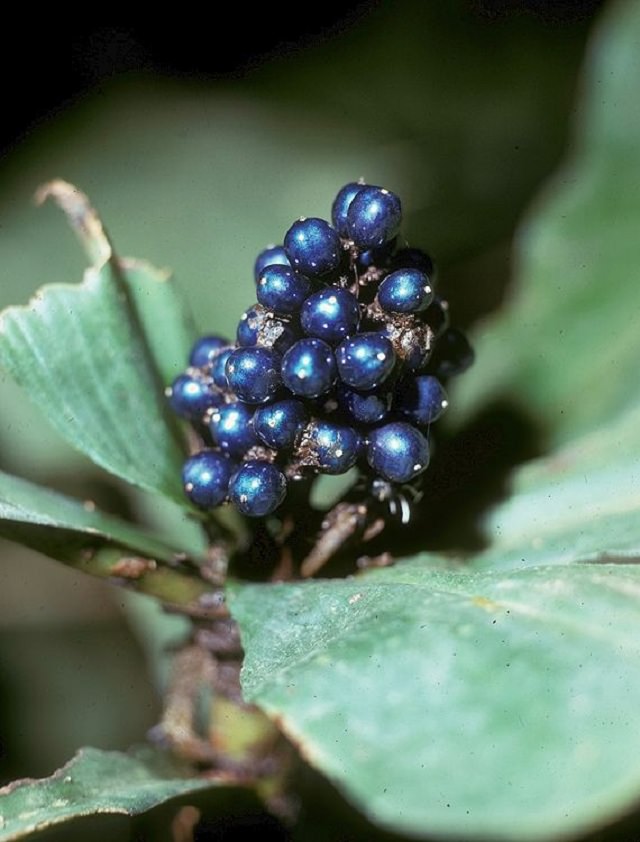Hidden deep in the jungles of central Africa, a forest fruit called Pollia shines exactly like the light bulbs that decorate Christmas trees.
According to Gizmodo, Pollia fruit is known as the brightest organism in the world thanks to its microscopic physical structure. In fact, this fruit does not contain blue pigment as it appears. It is the fruit of the Pollia Condensata tree, nearly 50cm tall, growing mainly in Ethiopia, Angola and Mozambique.

The surface of Pollia fruit is made up of 4 thick layers of cells. Each layer consists of many other layers made of fibers combined together. All fibers in the layer run parallel to each other, but the layers are arranged slightly around each other, forming a spiral when viewed from above.

When light shines on the surface of the fruit, the light rays are reflected back and forth by each fiber layer and are magnified according to the tectonic interference effect, producing many colorful colors, making the Pollia fruit brighter than any creature on the planet. . However, this fruit has no nutritional value.

According to physicist Silvia Vignolini at the University of Cambridge, England, who studies the color of Pollia fruit, the light reflection effect occurs from both directions, left and right, of each fiber cell. This characteristic is very unusual compared to a single cell of any object. The phenomenon of changing color of Pollia fruit attracts birds and mammals to nest on the tree.






